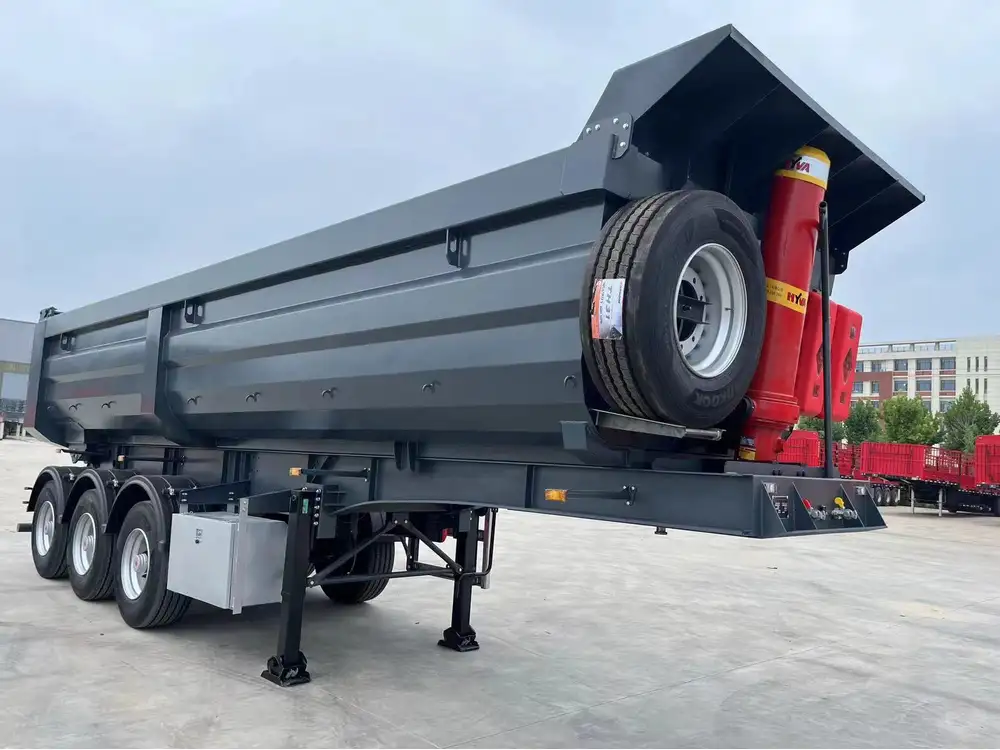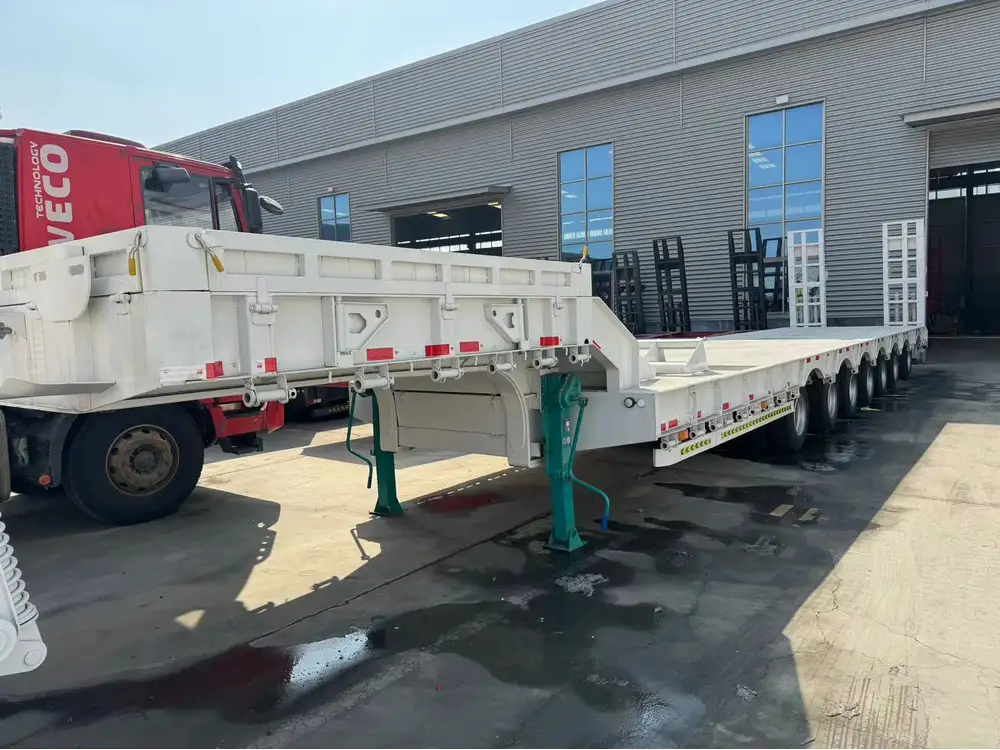When it comes to logistics and transportation, the size of a semi-trailer box is a pivotal factor that can deeply influence efficiency, costs, and compliance. As manufacturers and users in this sector, understanding the exact dimensions of a semi-trailer box and their implications is essential for optimizing both loading operations and overall fleet management. Here, we provide a thorough exploration of semi-trailer box dimensions, including standard sizes, the underlying factors that influence these dimensions, and practical applications of this knowledge.
Standard Semi-Trailer Box Sizes
Typical Lengths of Semi-Trailer Boxes
The length of a semi-trailer box is one of the primary considerations that transport coordinators and fleet managers must account for. Standard lengths generally range from:
| Length Category | Typical Lengths |
|---|---|
| Short Trailers | 28 feet (8.5 m) |
| Standard Trailers | 40 – 53 feet (12.2 – 16.15 m) |
| Long Trailers | Up to 64 feet (19.5 m) |

Short Trailers
Shorter trailers, usually around 28 feet, are often used for city deliveries or routes where turnaround times are critical. Their compactness allows for easier maneuverability in urban logistical environments.
Standard Trailers
Most commonly, standard trailers have a length of 53 feet. This size is widely accepted in North America and accommodates a capacity of around 26,000 pounds (11,793 kg) of cargo, allowing businesses to maximize payload efficiency while remaining compliant with transport regulations.
Long Trailers
For specific applications requiring additional space, long trailers can extend up to 64 feet. These trailers are less common but can be essential for bulk shipping and delivery operations needing capacity beyond typical constraints.

Width and Height Specifications
While length is paramount, width and height are equally critical. The standard width of a semi-trailer box is typically 102 inches (2.59 meters), which accommodates most cargo types while allowing for compliance with roadway regulations.
Width Table Summary
| Box Type | Width |
|---|---|
| Standard | 102 inches (2.59 meters) |
| Specialized | 96 inches (2.44 meters) |
The height of a semi-trailer typically ranges from 13.5 feet (4.11 meters) to 14.5 feet (4.42 meters). This elevation not only influences loading capabilities but also affects the type of bridge and tunnel restrictions a truck might encounter during transport.
Internal Dimensions
Understanding internal dimensions is crucial for loading efficiency. Semi-trailer boxes are usually designed with varying internal heights that affect how goods are stored and secured. For instance, a 53-foot semi-trailer has internal dimensions that may not directly correspond to external measurements due to structural elements, such as the upper support rails.
| Dimension Type | Typical Internal Measurement |
|---|---|
| Length | 53 feet (16.15 m) |
| Width | 97 inches (2.46 m) |
| Height | 110 – 114 inches (2.79 – 2.90 m) |

Factors Influencing Semi-Trailer Box Sizes
Regulatory Requirements
Regulatory frameworks, such as the Federal Motor Carrier Safety Administration (FMCSA) in the United States, set specific dimensions to ensure safety and efficiency in road transport. Understanding these regulations is essential for compliance and avoiding penalties.
Cargo Type
The nature of the cargo being transported often dictates the required trailer dimensions. For instance, flatbeds require different dimensions to accommodate large machinery, while refrigerated trailers might focus on height to maintain temperature consistency.

Load Distribution
Proper load distribution can influence the choice of a trailer size. Overloading beyond specified lengths or heights can not only put drivers and other road users at risk but also lead to structural damage to the trailer itself.
Practical Usage of Semi-Trailer Box Sizes
Logistics Planning
Understanding box sizes is crucial for logistics professionals. Ensuring that the size of the semi-trailer aligns with the cargo type streamlines operations. For example, utilizing a larger 53-foot trailer for bulk materials maximizes payload, while a smaller trailer may suffice for quick deliveries involving smaller items.

Fleet Optimization
Fleet managers can enhance efficiency by accurately matching trailers to specific uses based on size requirements. Proper training and awareness of the different dimensions among logistics teams can lead to reduced downtime and increased fuel efficiency.
Loading and Unloading Operations
From a practical standpoint, the size of a semi-trailer box can dictate the loading and unloading process. When considering operational settings—be it a warehouse, distribution center, or retail facility—understanding these dimensions allows for effective space utilization and planning for loading docks.
Comparisons between Trailer Types
Different types of semi-trailer boxes serve unique functions. Below is a comparison matrix illustrating the main differences between common trailer types:
| Trailer Type | Typical Length | Common Use Case | Special Features |
|---|---|---|---|
| Dry Van | 53 feet | General freight | Weather protection |
| Reefer | 53 feet | Temperature-sensitive shipments | Insulated walls, refrigeration unit |
| Flatbed | 48 to 53 feet | Construction materials, machinery | No sides; ease of loading/unloading |
| High Cube | 53 feet | Extra vertical cargo | Additional height |

Unique Considerations for Specific Industries
E-commerce
E-commerce is disrupting traditional logistics models. Distribution centers may require advanced planning concerning semi-trailer box sizes to accommodate the varied sizes of shipped goods. Companies emphasizing rapid delivery need to assess the trade-offs between larger trailers that carry more items and smaller ones that can navigate congested urban environments.
Refrigerated Goods
For refrigerated transport, the internal dimensions differ significantly in other trailer types due to the necessary insulation and cooling units. Businesses involved in food transport must pay close attention to both payload capacity and temperature control capabilities.

Heavy Loads
For heavy machinery and equipment, flatbed trailers provide flexibility in load size and weight. The height of such trailers can be adjusted, and various configurations (such as multi-axle setups) can be utilized to comply with load requirements.
FAQs Related to Semi-Trailer Box Sizes
What’s the maximum length allowed for a semi-trailer?
In most regions in the U.S., the maximum trailer length is regulated. Typically, it ranges up to 53 feet for standard trailers, although certain states may impose stricter limits on allowable dimensions.

Can semi-trailer sizes vary internationally?
Yes, semi-trailer box sizes can vary considerably worldwide due to different regulatory and market requirements. Users should be aware of these discrepancies when planning international logistics.
How do I select the right semi-trailer for my needs?
Consider the cargo type, typical loading volume, and regulatory restrictions while factoring in operational conditions like route types and expected delivery timelines. Aligning these factors with specific trailer options ensures optimal operational efficiency.
Conclusion
Understanding the dimensions of semi-trailer boxes is essential for maximizing efficiency in transport logistics. By being aware of standard sizes, regulatory requirements, and specific use cases, manufacturers, logistics managers, and transportation companies can make informed decisions that enhance performance, reduce costs, and ensure compliance. One size truly does not fit all, making it vital to evaluate every dimension and its implications accurately. As the logistics landscape continues to shift, being equipped with critical knowledge about semi-trailer sizes can provide a significant competitive edge.
We invite you to explore our range of semi-trailer solutions tailored to meet diverse requirements. By focusing on quality manufacturing practices and meeting industry specifications, we aim to help you optimize your transport strategies and achieve operational excellence.



